While most of my imaging outside of the visible spectrum is in the Ultraviolet, I do also like to take photographs at the long wavelength end in the Infrared (IR), especially for landscapes. Many lenses suffer from hotspots when used in the IR adding complexity when processing images. A few years ago Zeiss released their ZF-IR lenses (25mm, 50mm and 85mm) which had coatings on them to produce better IR transmission and reduce hotspots. These lenses weren’t available for long before Zeiss stopped selling them and they have now reached something of a cult status making them hard to find (and expensive) second hand. I recently managed to source examples of the 25mm f2.8 and 50mm f1.4 ZF-IR lenses from the photography dealer Jo Geier at Mint and Rare in Austria, and today I wanted to share some initial thoughts on them.
I’ll come to the transmission through the lenses in a minute, but to start with a visual comparison of the front elements of the 25mm ZF-IR and a normal version of the lens the 25mm ZF.2. This shows the reflection of sunlight through my kitchen window.

The coating on the front elements is very different between the two lenses as can be seen by their colour. Couple of things to note here. Ideally I would compare the ZF-IR with the ZF version, but I happened to have a ZF.2 copy of the lens. The ZF.2 came after the ZF but I would think the coatings would be very similar as the main difference was the addition of electrical contacts for providing aperture data. Note I have blurred the last 2 digits of the serial numbers on the lenses.
I measured the transmission through the 3 lenses I have (Zeiss 25mm f2.8 and 50mm f1.4 ZF-IR and 25mm f2.8 ZF.2) using my Ocean Insight spectrometers and a couple of light sources – xenon and halogen lamp. This allowed me to measure transmission from 300nm to 1000nm, although as I will explain with a couple of caveats.
First the comparison between the 25mm ZF-IR and ZF.2 lenses.

The ZF-IR transmission is lower at the blue end of the spectrum than the ZF.2 but while the ZF.2 transmission drops sharply above 700nm the ZF-IR does not. This matches what I’d expect to see from the Zeiss product data sheets. My system sensitivity drops sharply above about 920nm, which is why the data gets very noisy up there, and I don’t think the drops and peaks at around 950nm are real features. The curves are shown in 3 sections as I used 3 setups to measure them. Overall though the ZF-IR certainly offers better IR transmission above 700nm.
Now the Zeiss 50mm f1.5 ZF-IR and 25mm f2.8 ZF-IR.
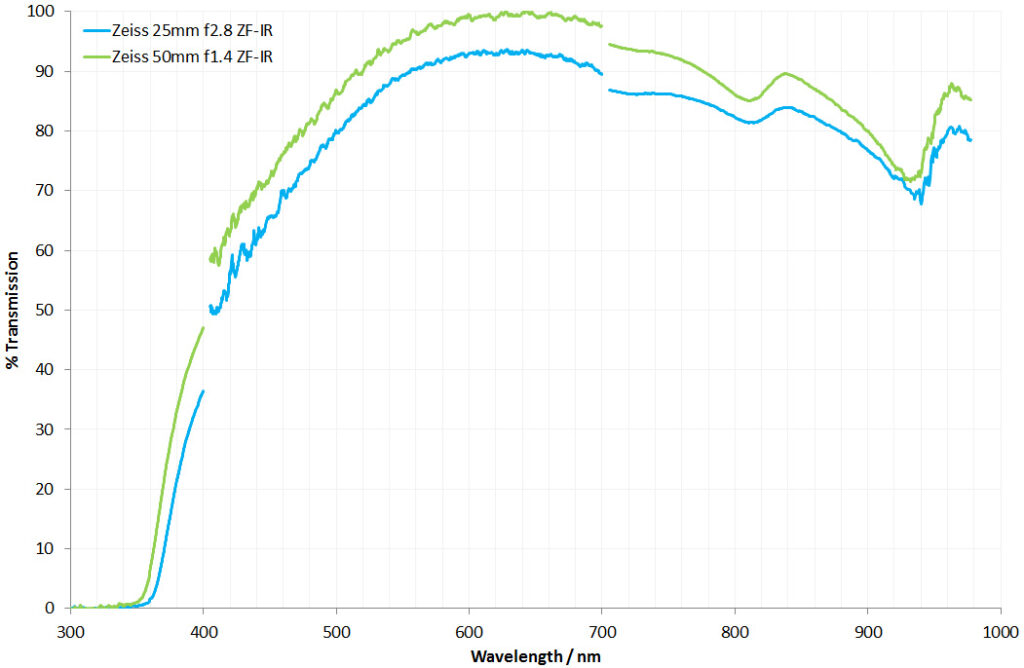
The Zeiss 25mm and 50mm ZF-IR have very similar shaped curves, which is what would be expected assuming they have the same coatings.
I did some quick landscape test shots with the 25mm f2.8 ZF-IR using my monochrome converted Nikon d800 camera from MaxMax and a Heliopan 780 IR filter, and these are show below.
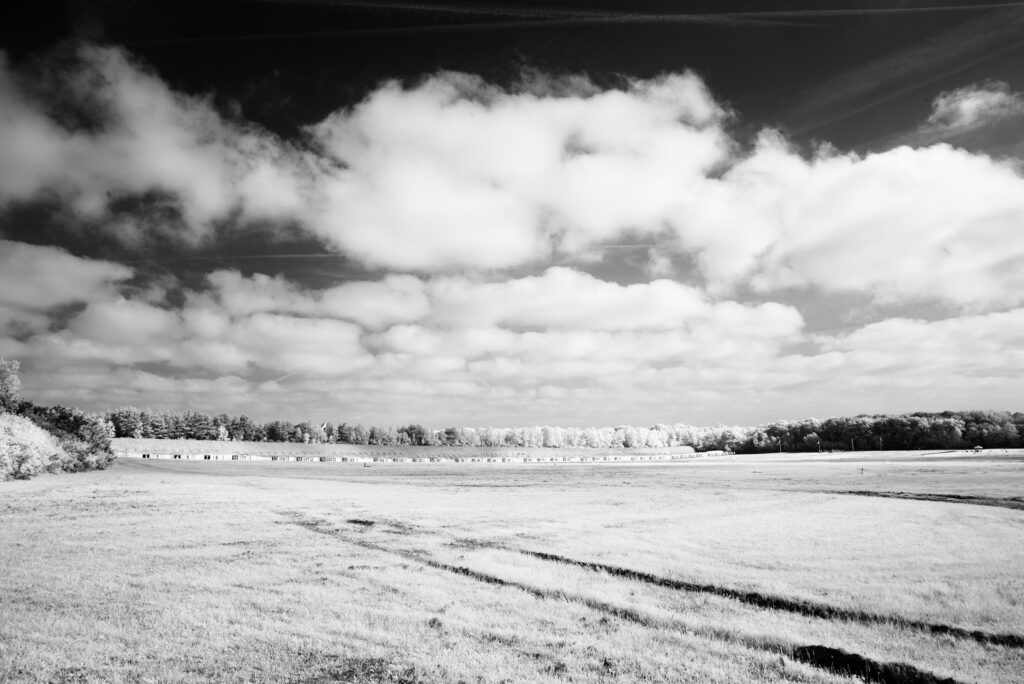
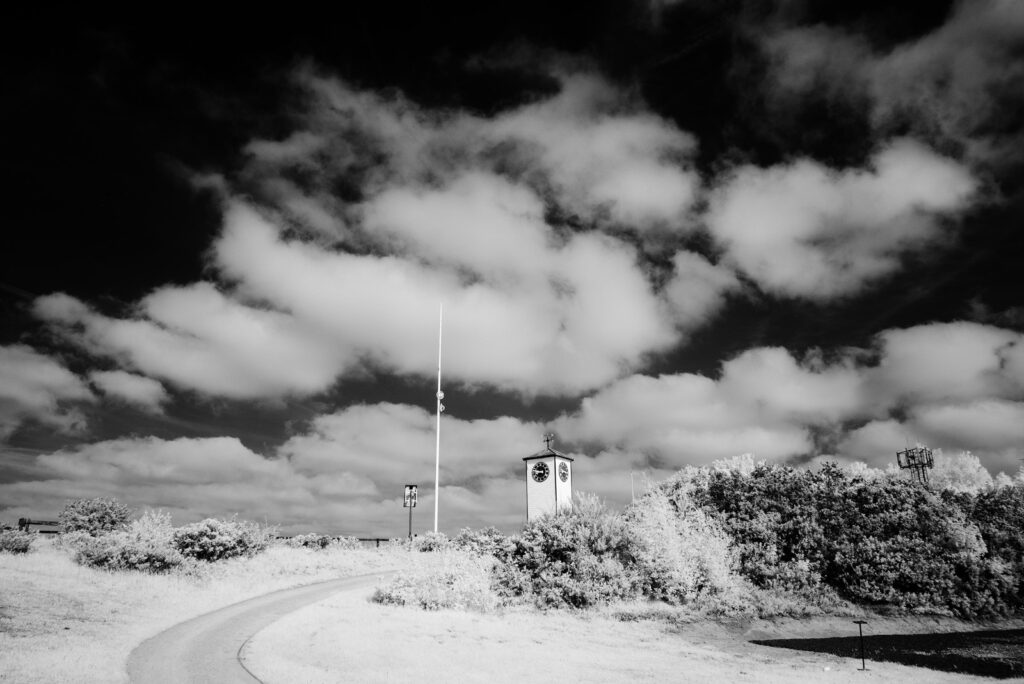
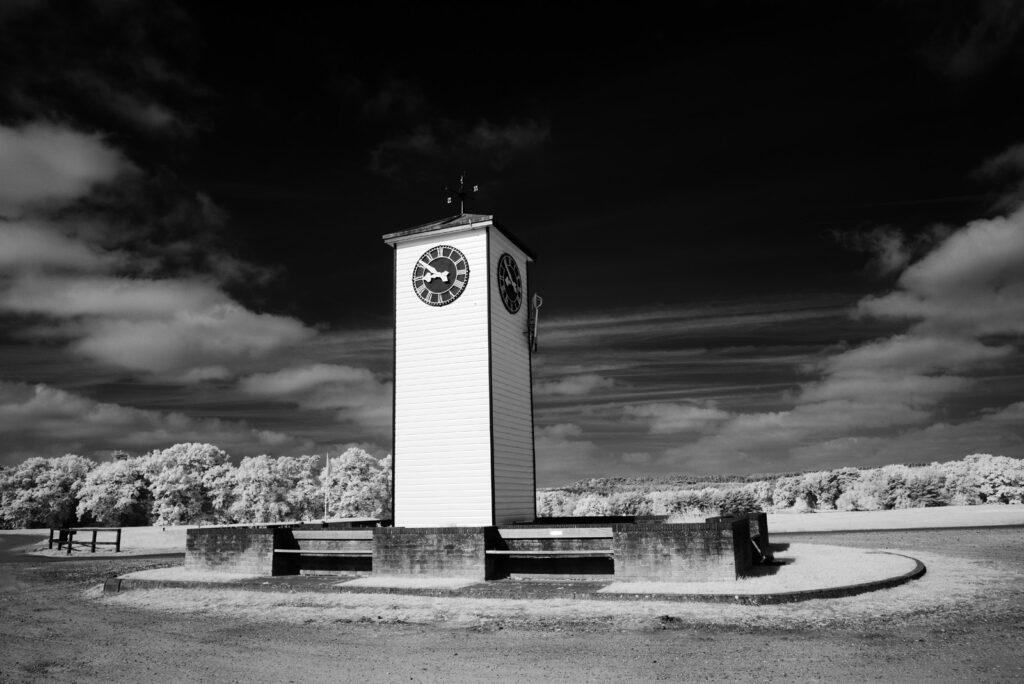
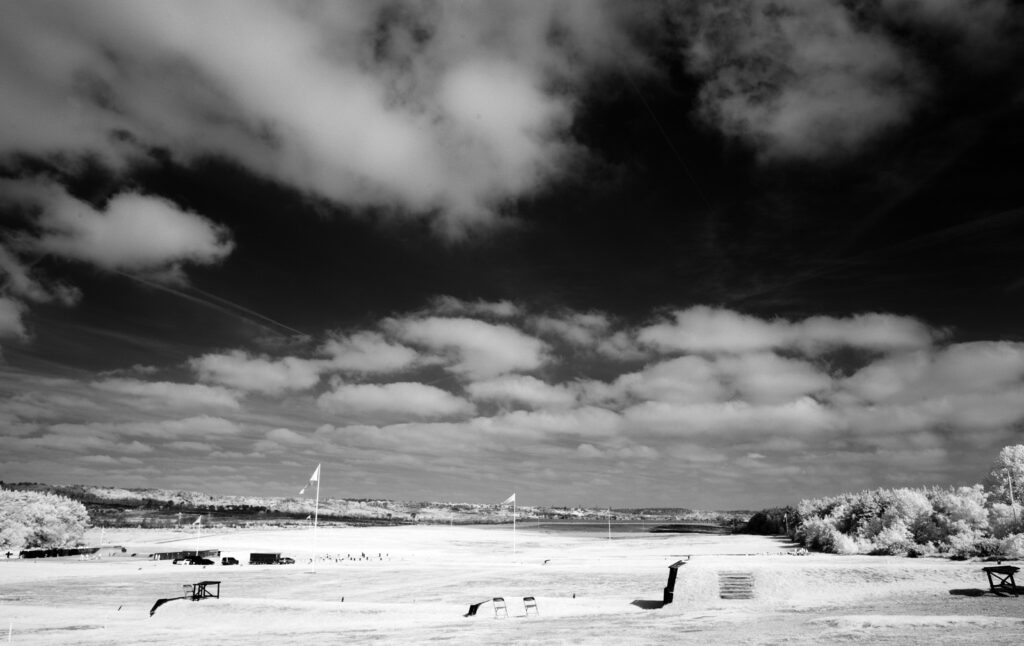
The lens certainly seems to live up to its reputation for not producing hotspots in the IR. I have heard that the 50mm ZF-IR is more prone to hotspots, although I have not been able to replicate that yet. To finish with, a not often seen photo of the 25mm and 50mm ZF-IR lenses together.
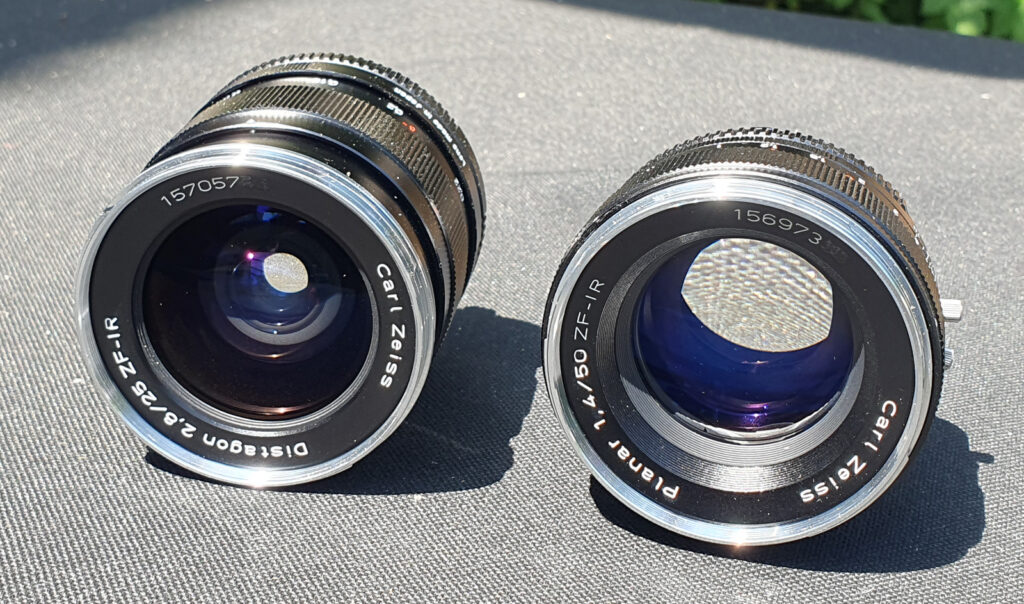
Overall, I’m very happy with the two Zeiss ZF-IR lenses and they will be a great addition to my non-visible light imaging capability. As always, thanks for reading and if you’d like to know more about my work, I can be reached here.
